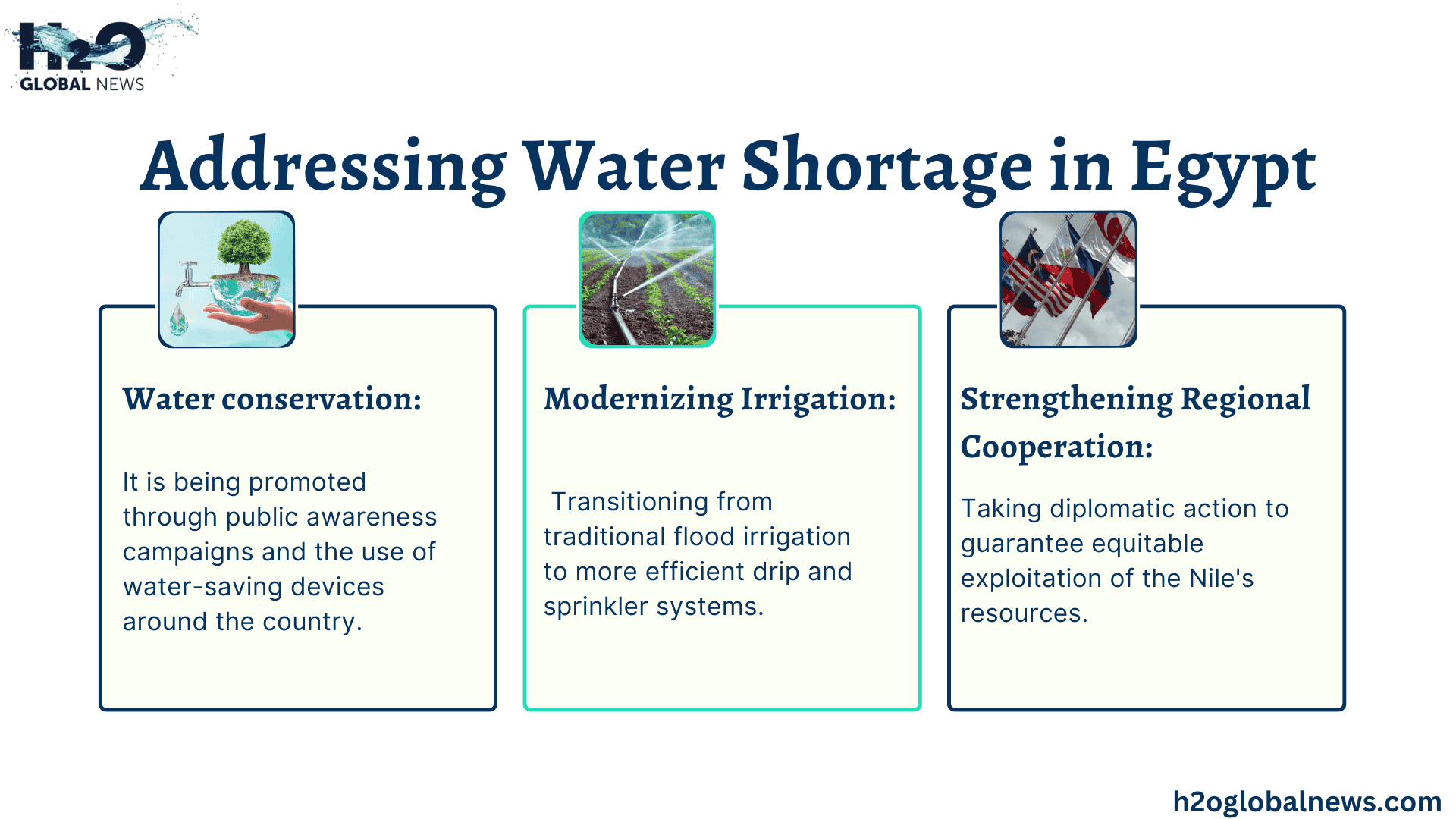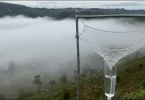As a concerned global citizen, you understand the vital importance of access to fresh water. For Egypt, a nation almost entirely dependent on the Nile River, water security is an issue of national survival. With a booming population of over 100 million and growing, Egypt is pushing the limits of what the Nile can provide. You may have read about Egypt’s plans to build a parallel artificial river to supplement the Nile, a megaproject of unprecedented scale. If successful, it could reshape Egypt’s landscape and ensure water for future generations.
However, an undertaking of this magnitude also brings risks and uncertainty. By exploring the ambitious parallel river proposal, you’ll gain insight into how one nation is taking drastic action to address critical water needs and plan for a water-secure future. Read more about Water for the Future: Egypt’s Parallel Nile River Project.
The Role of the Nile River in Egypt’s Water Supply
The Nile River is the world’s longest river, spanning approximately 6,650 kilometers (4,130 miles) or 6,650,000 meters. For thousands of years, it served as Egypt’s primary source of water. The Nile supports nearly 100 million people throughout the country, providing agricultural irrigation and drinking water.
However, the increased demand for this crucial resource has generated concerns about Egypt’s long-term water supplies. Rapid urbanization, industrial growth, and upstream dam construction in neighboring nations contributed to Egypt’s water scarcity.
What Is the Parallel Nile River Project?
The Parallel Nile River Project would divert water from Lake Nasser, the reservoir behind the Aswan High Dam, into a new river channel running parallel to the Nile. By 2050, Egypt’s population is projected to reach 150 million, so this additional water source is critical to meet future demand. The project includes:
- Canal Systems for Agricultural Development: Creating new canals to bring water to underserved agricultural areas.
- Water Recycling Plants: Developing innovative facilities for wastewater treatment and reuse.
- Desalination Plants: Using Egypt’s closeness to the Mediterranean Sea for large-scale desalination, which reduces reliance on freshwater supplies.
These steps will help to ensure that Egypt’s agricultural and industrial output, which are crucial to the country’s economy, is not hampered by water scarcity.
Benefits of a Parallel Nile
A parallel channel would provide several benefits:
- Increased water supply. A parallel channel could increase Egypt’s water supply by up to 15 billion cubic meters per year, helping to meet the needs of Egypt’s growing population and agricultural sector.
- Flood control. The channel could be used to divert excess water during floods and release it during drier periods, helping to regulate water levels. This could mitigate the impacts of droughts and floods.
- Hydroelectric power. Egyptians could use the flow of water in the channel to generate hydroelectric power, which is a renewable and affordable source of energy.
- Economic growth. With an improved water supply and more available hydroelectric power, Egypt’s agricultural production and economy could grow significantly. This could help improve living standards for millions of Egyptians.
While an ambitious and complex project, a parallel Nile channel could be a viable solution to meet Egypt’s future water needs and drive economic growth. By sustainably managing this additional water source, Egypt could turn its water scarcity challenges into opportunities for a more prosperous future.
Sources of Water in Egypt
Egypt’s water supply is mostly obtained from the following sources:
- The Nile River accounts for more than 90% of the country’s water resources.
- Groundwater: Found in the Western Desert and Sinai Peninsula, but limited and nonrenewable.
- Rainfall is minimal and insufficient for large-scale applications.
- Treated wastewater is increasingly used for agricultural irrigation.
- Desalination is becoming an important source, particularly in coastal regions.
Challenges Facing the Parallel Nile Project
The Parallel Nile River project faces several significant challenges that must be addressed for its successful completion and operation.
Cost
The estimated cost to construct a parallel canal system of the size and scope to match the Nile River is extremely high. Egypt’s government would need to secure major funding from private investors, banks, and possibly foreign governments to finance the project. The cost to operate and maintain an artificial river system is also substantial and would require ongoing funding and resources.
Water Scarcity Egypt
Egypt already faces water scarcity issues, with the Nile River supplying 95% of the country’s freshwater. An artificial parallel river would require a massive volume of water to operate, which Egypt may not have available to allocate for this purpose, especially as droughts become more frequent. Solutions for securing a sustainable water source must be determined.
Environmental Concerns in the Nile River
A project of this magnitude would undoubtedly have significant environmental impacts that must be considered. Flooding land to construct a new river channel could disrupt wildlife habitats and biodiversity. The artificial river may also change water flows and levels in the natural Nile riverbed, affecting plant and animal life. Pollution from the new waterway is another concern. Extensive environmental impact reports and protection plans would need to be put in place.
Agriculture and Economy
While an artificial Nile River could increase agricultural production and benefit Egypt’s economy, it also poses risks. Farmers and businesses along the natural Nile River would be impacted, potentially in negative ways. The tourism industry, which depends greatly on the Nile River, could also be affected. Egypt would need to determine how to enhance the benefits of the project while mitigating undesirable consequences.
Well-designed plans and solutions can properly address the challenges related to cost, water scarcity, environmental impact, and effects on the economy to help the Parallel Nile River project meet Egypt’s future water needs and support its agricultural industry. With prudent management of these issues, the benefits of a parallel Nile River may outweigh the difficulties involved in its implementation.
Addressing Water Shortage in Egypt
The Parallel Nile River Project is only one component of Egypt’s overall effort to overcome water scarcity. Other initiatives include:
- Water conservation is being promoted through public awareness campaigns and the use of water-saving devices around the country.
- Modernizing Irrigation: Transitioning from traditional flood irrigation to more efficient drip and sprinkler systems.
- Strengthening Regional Cooperation: Taking diplomatic action to guarantee equitable exploitation of the Nile’s resources.
Timeline and Costs for Constructing the Parallel Nile
The Egyptian government aims to complete the Parallel Nile River Project within the next decade. Once approved and fully funded, it is estimated that construction will take between 5 to 7 years. They project the total cost of the project to be between $3 to USD 5 billion.
Timeline
The timeline for the project includes several key phases:
- Feasibility and design studies: 2-3 years. Includes environmental and social impact assessments.
- Contracting and planning: 1-2 years. The government will need to secure funding, issue contracts and finalize blueprints. We will consult local communities.
- Construction: 5-7 years. Machines will mostly dig the 250 km long, 300 m wide parallel channel, creating temporary jobs. We will need precise engineering to connect the new channel to the Nile at several points.
- Testing and launch: 6-12 months. Once we complete construction, we will test the new channel to ensure optimal water flow, depth, and connections before using it.
Costs
We expect private and public foreign investors, the Egyptian government, and possibly the World Bank or IMF to provide the majority of funding.
Costs include:
- We will need to purchase or lease 12,500 hectares of land along the Nile Valley for $500M to $1B for land acquisition.
- Earthmoving and excavation: $1.5B to $2.5B. Move 200M cubic meters of sand and rock to dig the channel.
- Concrete and infrastructure: $500M to $1B. Include locks, pumping stations, bridges, and bank reinforcements.
- Environmental mitigation: $200M to $500M. Minimize impact on wildlife, agriculture, fishing, and tourism. Reforestation, habitat protection, and community programs.
- Contingency funds: $300M to $500M. Additional costs for delays, cost overruns, interest payments, or unforeseen challenges.
If executed properly, the new waterway could provide substantial economic and social benefits to Egypt for generations. The government aims for the Parallel Nile River Project to be a source of national pride that showcases the country’s engineering and technological capabilities on a global scale.
Conclusion
As you have seen, Egypt’s ambitious plan to construct a parallel Nile River is an innovative solution to solve the country’s future freshwater scarcity issues. While an engineering and financial marvel, the project also faces many obstacles and unknowns in its implementation. However, this visionary plan can become a reality with strategic partnerships, efficient project management, and open stakeholder communication. By securing a sustainable water source for agriculture, industry, and its citizens, Egypt is investing in a brighter future for generations to come. The parallel River Nile project can transform into flowing hope with perseverance and determination.
FAQs
1- How long is the River Nile in meters?
The Nile River is approximately 6,650,000 meters (6,650 kilometers) long, making it the longest river in the world.
2- How long will it take to complete the project?
The project is expected to take approximately 10 years, including feasibility studies, planning, construction, and testing.
3- Who is funding the Parallel Nile River Project?
Funding is expected to come from a combination of private investors, the Egyptian government, and international organizations like the World Bank or IMF.










